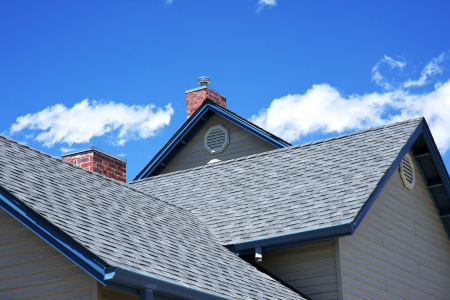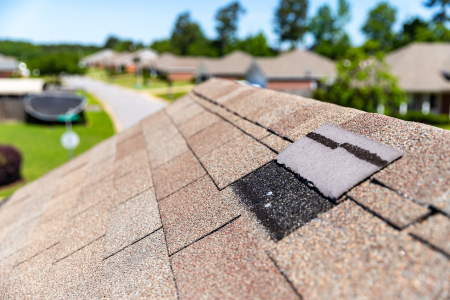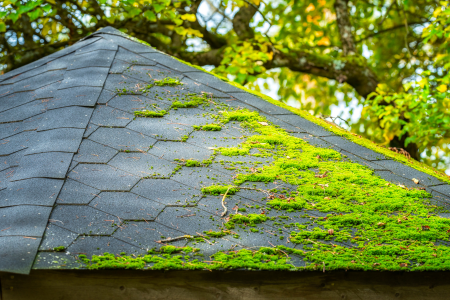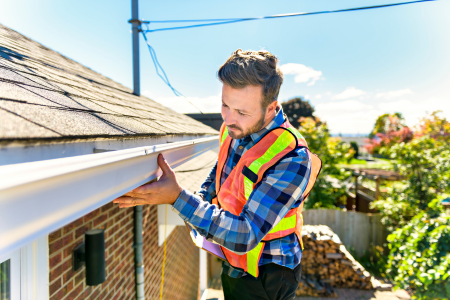Your roof is one of the most critical components of your home, protecting you and your family from the elements day in and day out. With regular maintenance and care, you can extend the lifespan of your roof and avoid costly repairs or replacements down the line. In this guide, we will share 10 essential maintenance tips to help you keep your roof in top shape for years.
From inspecting for roof damage to cleaning out gutters, we’ve got you covered with all the information you need to keep your roof in optimal condition. Don’t wait until it’s too late – start taking care of your roof today and reap the benefits of a long-lasting, durable roof that will keep you safe and dry.
1. Inspect Your Roof Regularly
Inspecting your roof at least twice a year and after severe weather events can help you spot issues like missing shingles, cracks, or other damage early on. This proactive measure allows for timely repairs, preventing minor issues from escalating into major problems.
2. Clean Your Gutters
Clogged gutters can cause water to back up and damage your roof, walls, and foundation. Ensure that you clean your gutters and downspouts regularly to prevent blockages, especially during the fall when leaves are likely to accumulate.
3. Trim Overhanging Branches
Tree limbs that hang over your roof can drop leaves and debris, leading to gutter clogs and damaged shingles. In addition, during a storm, these branches can break off and cause significant damage. Trimming any overhanging branches will help protect your roof.
4. Look for Signs of Moss, Algae, and Fungal Growth
Moss, algae, and fungi can trap moisture against the roof, causing rot and degradation over time. If you notice any of these growths, it’s essential to address them promptly with the appropriate cleaning agents or professional help.
5. Ensure Proper Attic Ventilation
Improper attic ventilation can lead to heat and moisture buildup that damages your roof from the inside. Make sure your attic is well-ventilated to prevent these issues and extend the life of your roof.
6. Check for Adequate Insulation
Just like ventilation, proper insulation in your attic can prevent heat and moisture buildup. This not only keeps your house warmer in winter and cooler in summer but also prevents ice dam formation on your roof during the cold months.
7. Seal and Secure Roof Flashings
Flashings around vents, chimneys, and skylights protect the most vulnerable parts of your roof. Check these areas to ensure the flashings are intact and free from rust or damage, applying sealant or making repairs as necessary.
8. Perform Regular Professional Inspections
While DIY inspections are helpful, having your roof professionally inspected can reveal issues that you might overlook. A roofing expert can offer detailed assessments and solutions for any problems they find.
9. Repair Damage Promptly
Even minor damages, like a few missing shingles, can lead to more significant problems if left unaddressed. Prompt repairs will prevent water infiltration and further damage, keeping your roof in good condition.
10. Protect Against Ice Dams
In colder climates, preventing ice dams is crucial. These occur when heat from your attic melts snow on your roof, refreezing at the edges and creating dams that prevent proper drainage. Adequate insulation and roof ventilation are vital in preventing these dams from forming.
Roof Inspection Cheat Sheet
Proper roof maintenance can often seem overwhelming, but it doesn’t have to be. To make your life easier and ensure you cover all the essential aspects of roof care, we’ve created a handy Roof Inspection Cheat Sheet. This comprehensive guide will walk you through the simple yet effective steps to inspect your roof, helping you spot and resolve potential issues before they escalate into costly repairs. Remember, a well-maintained roof is key to your home’s overall health and longevity.
Schedule Routine Professional Inspections
Hiring a professional to conduct regular roof inspections is one of the most critical steps in maintaining your roof’s health. A roofing expert can identify issues that are not always visible to the untrained eye, such as minor leaks, improper flashing installations, or the early stages of rot and mold. It’s recommended to have a professional inspection at least once every two years or after any severe weather events.
Examine the Roof Shingles
Look closely at your roof shingles to check for any signs of wear and tear. Look for cracked, missing, or curling shingles, as these can lead to leaks and water damage. Also, pay attention to any loss of granules, as this could indicate the shingles are nearing the end of their lifespan.
Inspect the Gutters for Shingle Granules
Heavy accumulation of granules in your gutters can be a sign that your roof is wearing down. These tiny pieces can shed off older shingles, indicating it might be time for a repair or replacement. While cleaning your gutters, take note of the granule buildup, especially after heavy rainstorms.
Scan for Signs of Moss or Algae
Moss and algae growth can compromise your roof’s structural integrity by trapping moisture. During your roof inspection, scan for any green or black streaks that indicate moss, algae, or fungal growth. Early detection and treatment can prevent these organisms from causing significant damage.
Check for Proper Ventilation
Ensuring your attic and roof are appropriately ventilated is crucial in preventing heat and moisture buildup that can lead to rot, mold, or damaged insulation. During your inspection, check for any signs of poor ventilation, such as moisture in the attic or unusually high heating and cooling bills, which can indicate inadequate airflow.
Evaluate the Roof Flashing
Inspect the flashing around vents, chimneys, and skylights to ensure it’s in good condition. Flashing is critical for preventing water from seeping into your home through roof joints. Any signs of rust, cracks, or breaks in the flashing should be addressed promptly to avoid leaks.
Final Thoughts
Regular roof maintenance and inspections protect your home from water damage, mold, and other costly issues. With this comprehensive guide, you now have the knowledge to care for your roof and extend its lifespan properly. Remember to schedule professional inspections regularly and promptly address any repairs to keep your roof in shape.




